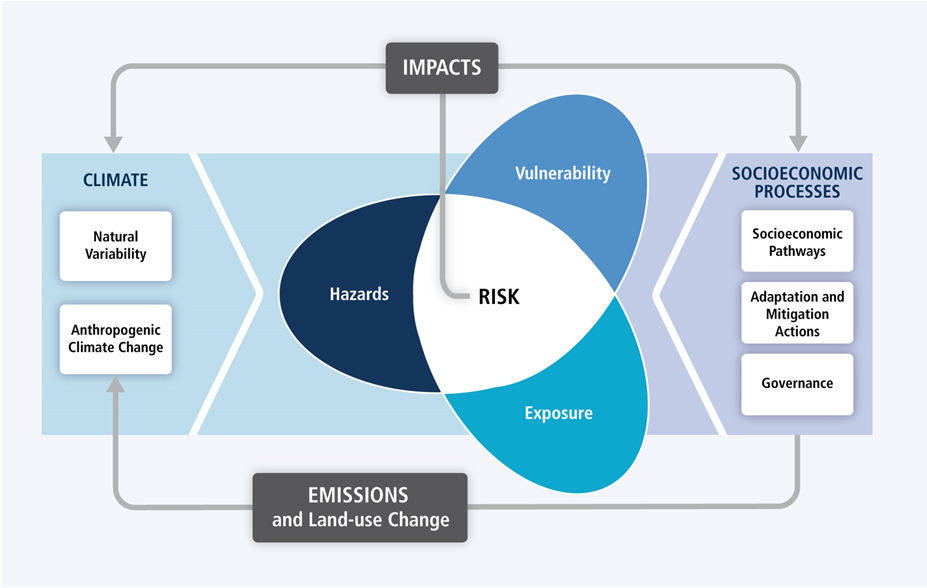Concepts and Approach

Illustration of the core concepts in the Impacts, Adaptation, and Vulnerability IPCC Report, 2014. Risk of climate-related impacts results from the interaction of climate-related hazards (including hazardous events and trends) with the vulnerability and exposure of human and natural systems. Changes in both the climate system (left) and socioeconomic processes including adaptation and mitigation (right) are drivers of hazards, exposure, and vulnerability. Source: Figure SPM.1 in IPCC, 2014: Summary for policymakers. In: Climate Change 2014: Impacts, Adaptation, and Vulnerability. Cambridge University Press.
The ClimaSouth region is experiencing rapid social change, has experienced rapid climate changes in recent decades, and is projected to experience some of the most damaging climate changes in the 21st Century. The combination amplifies the value of one aspect emphasised in the 2014 IPCC report on Climate Change Impacts, Adaptation, and Vulnerability: An approach to adaptation that recognises the role of social change and climate in defining the climate risks and the locally appropriate adaptation measures (see the above figure from the IPCC report).
A change in society (infrastructure, practices etc.), or a change in the climate, may alter the climate-related risks that can threaten human well-being and economic productivity. For example, the societal change of increasing urbanisation can alter the risk of flash-flooding without any change in climate, due to changes in run-off characteristics. This then requires adaptation measures to improve management of the flash-flooding problem. In fact, in this example, future projections of climate through the 21st Century suggest in many locations, that it is likely that there will be an increased frequency of extreme heavy rainfall weather events. So for urban flash-flooding, changes in society and changes in the projected climate both make the risks of flash-flooding a growing problem, demanding adaptation actions to ameliorate the associated impacts. The adaptation actions may take the form of improved risk management systems for the weather events that trigger individual floods. Early warning systems can be a building block for such adaptation. Or adaptation actions may take the form of longer-term responses, such as changes in infrastructure and building practices, such that the urban area, and the livelihoods and economy that it supports, are more resilient to heavy rainfall events. The flash-flood example is but one of countless examples where adaptation is needed within the nexus of social change and climate change, across much of society including sectors like agriculture, human health, coastal zone management and water resources.
Adaptation requires climate information to inform the adaptation measures. At least, an assumption about the climate is always made, either implicitly or explicitly. Recognising this, the adaptation dimension of the ClimaSouth project, in the first of its three adaptation thrusts, explicitly promotes better use of climate data and climate science for better climate information products that can inform vulnerability assessments and adaptation actions. This was the basis of the Regional Seminar on Improving Climate Change Information, held in Lecce, 28-30 April, 2014. The seminar brought out many of the key issues in the availability and use of climate information for enhanced adaptation and management of climate risks.
The Seminar Handbook is here and further development of the adaptation-related issues is provided here



